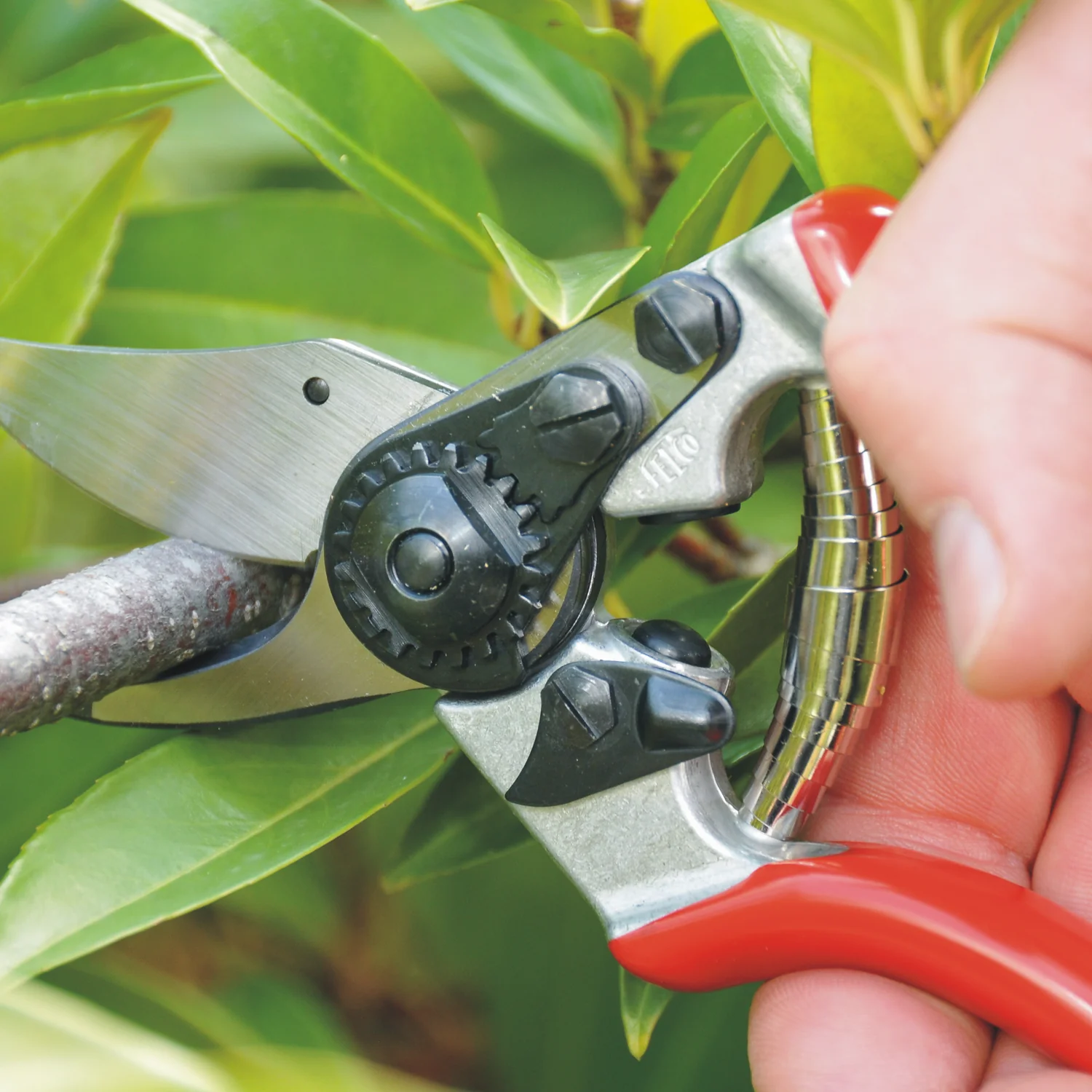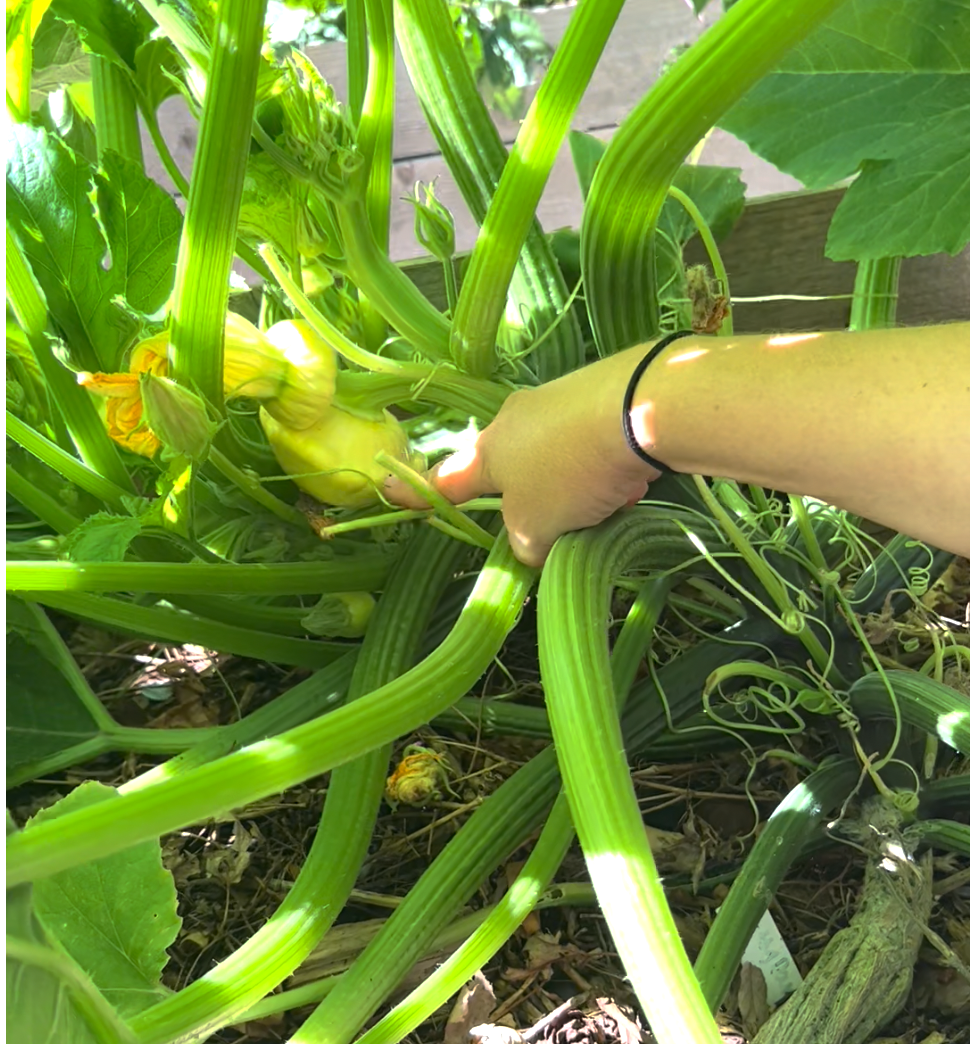Pruning for Productivity: How to Keep Your Zucchini Plants Healthy and Pumping Out Fruit
Let’s talk about one of the most underrated skills in kitchen gardening: knowing when (and how) to prune your zucchini plants for maximum harvest.
If your zucchini plant is starting to look like a jungle, you’re not alone. These plants grow fast and furious, and if you’re not checking in regularly, they can get a little… chaotic. But with a few quick snips, we can redirect the plant’s energy toward growing delicious zucchinis instead of wasted leaves or unpollinated fruit.
Let’s dig in 👇
Get our free Denver Kitchen Garden Tool Checklist now!
My Favorite Tool for the Job: A Really Good Hand Pruner
My pick: Felco 6 Pruners
I’ve tried the cheap ones. (Spoiler alert: they all ended up in the donation bin.) But the Felco 6s? Game changers. They’re lightweight, made for smaller hands, and sharp enough to make clean cuts that won’t stress your plants. That means healthier plants and better harvests.
You’ll use these babies for everything: cutting back herbs, pruning tomatoes, even snipping a few stems for a kitchen bouquet. They’re always in my harvest basket.
Get This Tool: Felco 6 Pruners
Step-by-Step to Pruning Your Zucchini
Okay, now let’s get down to business and talk about how to prune your zucchini plants the smart way! Here’s my step-by-step tips to boost airflow, prevent disease, and grow more fruit in your backyard kitchen garden.
Step 1: Harvest First
Before I touch the shears, I always harvest any zucchinis that are ready to go. In the video, I picked two that were a perfect size for dinner that night. Why harvest first? Because once the plant starts putting energy into a fruit, it’s not going to redirect that energy until you remove it.
So: harvest what’s ripe, then prune.
Step 2: Say Goodbye to Aborted Fruit
I spotted a couple zucchinis on my plant that didn't get pollinated, and it was obvious. They were shriveled, yellowing at the blossom end, and soft to the touch. If you see this on your plants, go ahead and cut those off.
👉 Why? Because your plant is still trying to send energy to those aborted fruits, even though they’re never going to fully grow. Removing them tells the plant to focus on what will produce.
Pro tip:
This is common when there aren't enough male flowers open at the same time as your females. I’ve got a reel on pollination tricks if you’re curious, check it out!
Step 3: Prune Below the Bottom Fruit
This is where things get fun. I like to grow my zucchini vertically using a tomato cage. It saves space and makes pruning so much easier.
Here’s what I do:
I find the lowest fruit that’s still growing, then I cut off all the large leaves and stems below that fruit.
These older leaves aren’t contributing much, and they tend to block airflow and encourage pests or mildew.
✂️ Don’t worry, it’s okay to remove quite a few leaves as long as you leave the newer growth up top.
Step 4: Keep the Male Flowers
If you’re pruning and you see unopened flower buds, especially at the top, leave those alone! Zucchini plants grow both male and female flowers, and you need both for fruit to develop.
At the time of filming, I had four female flowers that hadn’t bloomed yet, and I made sure to keep the surrounding male buds intact. These unopened male flowers will do their job soon, so don’t be too quick to chop them.
Zucchini Care Recap:
✔️ Harvest ripe fruit first
✔️ Cut off any aborted or unpollinated fruit
✔️ Remove all leaves and stems below your lowest growing zucchini
✔️ Keep unopened male and female flowers intact
✔️ Aim for good airflow and sunlight around the base
Why This Works (Especially in Denver)
In our dry Denver climate, airflow is everything. By removing lower leaves:
You reduce the risk of powdery mildew, which thrives in damp, crowded conditions.
You allow sunlight to reach the base of your plant, improving overall health and helping nearby crops thrive.
You give your zucchini space to focus on fruit, not foliage.
This method also helps you spot issues faster, like insect damage or early rot, so you can act before it gets out of hand.
Want More Tips Like This?
If you’re growing veggies in a Denver backyard, you’re in the right place. Our microclimate can be wild (hail one day, heatwave the next) but with the right know-how, your garden can thrive all season long 🌿
👉 Check out my Denver Growing Guide for even more region-specific gardening advice.
And if you haven’t yet, be sure to swing by the shop for my go-to trellises and vertical supports, designed just for Colorado gardens.
Want the Full List of my favorite Denver kitchen garden tools?
This is just the tip of the trowel! I put together a full, beautifully designed checklist of all my favorite gardening tools—perfect for beginners or anyone wanting to simplify their setup.
It includes soil tools, weeding gadgets, harvest helpers, and even my favorite freezer containers.
Get the free garden tool checklist!
Give Your Garden the Best Start This Year!
Whether you’re starting from scratch or you’re a garden pro, let us support you in your garden this season. We’ve got something for everyone!
🌱 Want to learn exactly what to grow (and when) in Denver?
Check out our Denver Growing Guide for in-depth advice, planting tips, and planning strategies! Let’s start planning your best garden yet.
🌱 Need help designing a garden that works for YOU?
We offer consultations, custom garden and landscape designs, and maintenance packages. Sign up for a consultation today and let’s create a space that nurtures both your plants and your well-being.
Have questions or want to share your gardening success stories?
Drop a comment below, or reach out through our Contact Page!
Check out our free resources or services!
Save this Blog on Pinterest!
**This post may contain affiliate links, which means I earn a small profit if you click on the link to make a purchase. Other links are not sponsored, because I also like supporting small, local businesses.**
Meet the Gardener
I’m Elisa Mack - a mom and Denverite who went from being a green-ish thumb to a kitchen garden fanatic simply by dedicating myself to the study of all things Colorado gardening.
Landscapers don’t design. And nurseries don’t make house calls.
We take a more full-service approach, from designing your dream garden to keeping it beautiful year-round.
And as your coach, I’ll help eliminate the guesswork through every season, no matter your level of knowledge.














